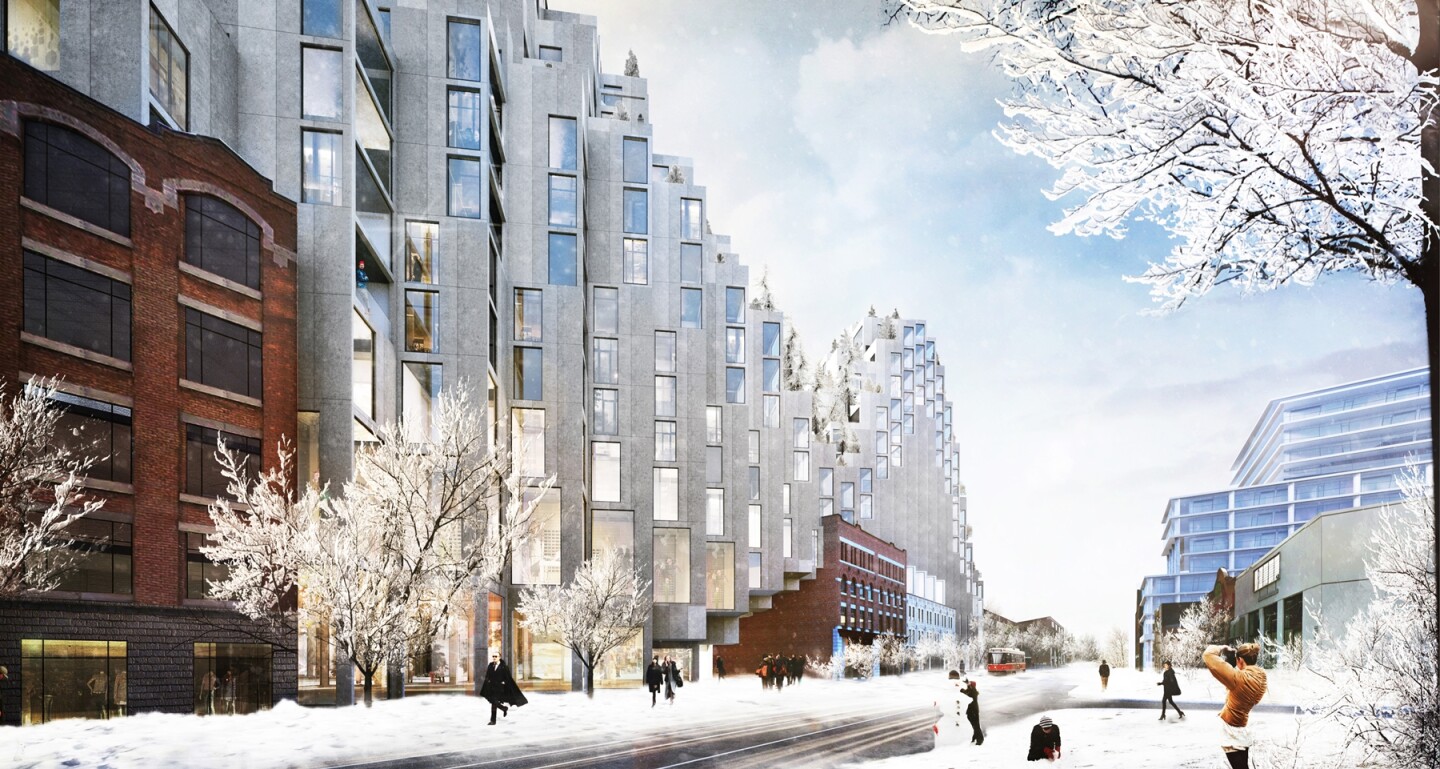In what Bjarke Ingels says will be a striking departure for the city's architecture, the Danish architect has designed a homage to Moshe Safdie's Habitat 67 for Toronto, Canada. King Street West will appear like a mass of undulating pixels flowing up and over buildings that are already on the site.
"With King Street West, we wanted to find an alternative to the tower and podium you see a lot of in Toronto and revisit some of Safdie's revolutionary ideas, but rather than a utopian experiment on an island, have it nested into the heart of the city," explains Ingels, founder of Bjarke Ingels Group (BIG). "It would be strange if one of the most diverse cities in the world had the most homogenous architecture."
Habitat 67 was Safdie's first project and was originally conceived as his university thesis, before coming to fruition as part of the Expo 67 world's fair held in Montreal. It had a minimalist and modern design comprising 354 modules stacked upon each other.
King Street West is not the first time that Habitat 67's style has been used as inspiration elsewhere. Safdie himself revisited aspects of the concept with his Sky Habitat development in Singapore and, indeed, we can't help but think it can't have been too far from Ingels' mind when designing the green-topped pixels of his firm's 79 & Park.
King Street West, however, is perhaps the most strikingly similar to Habitat 67 of the three in terms of looks, which perhaps informed the project's original working title of "Habitat 2.0." The low profile of the building stretches for a perimeter block and its rise and fall is especially reminiscent of Safdie's creation. It does appears to have more aesthetic order, though, with its pixels all neatly aligned and turned at 45-degrees to the streets along which they run, in order to maximize their exposure to light and air.

Nonetheless, the relief of King Street West, peaking at five points that apparently vary in height, still give it an organic feel and this idea is drawn through to the base of the structure, which is pulled up like a skirt at points to provide access to a central public plaza. This plaza is part landscaped "forest" and part hardscaped courtyard. It, and other parts of the building, are filled with natural light that flows through the trough of the structure's waves.
The undulating form also allows for the tiered nature of the building and the green terraces attached to its apartments. According to Toronto-based news outlet the Globe and Mail, there will be more than 500 apartment units made up of 12 x 12-ft (3.7 x 3.7-m) modules that house a room each. BIG says there will also be space for retail units and boutique offices.
We've asked BIG when it expects construction to begin, when the project is due to be completed and exactly how many residential units it expects there to be. We'll let you know.
Sources: BIG, Habitat 67











